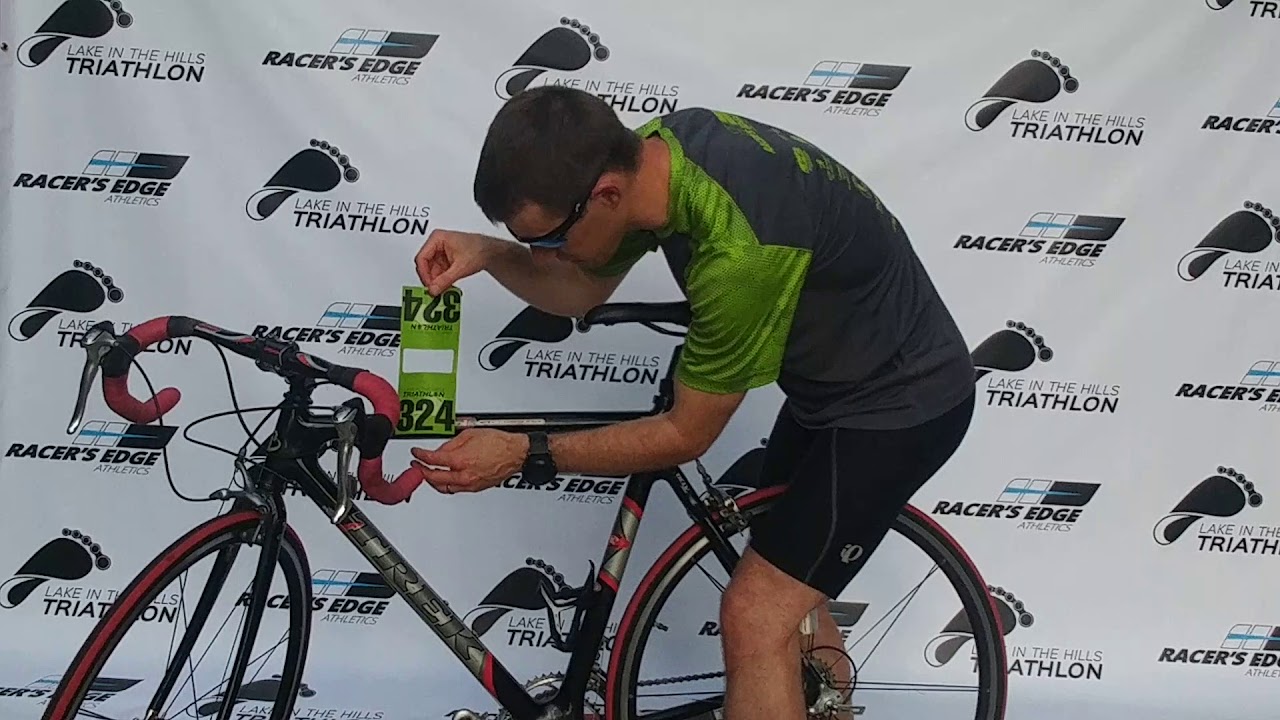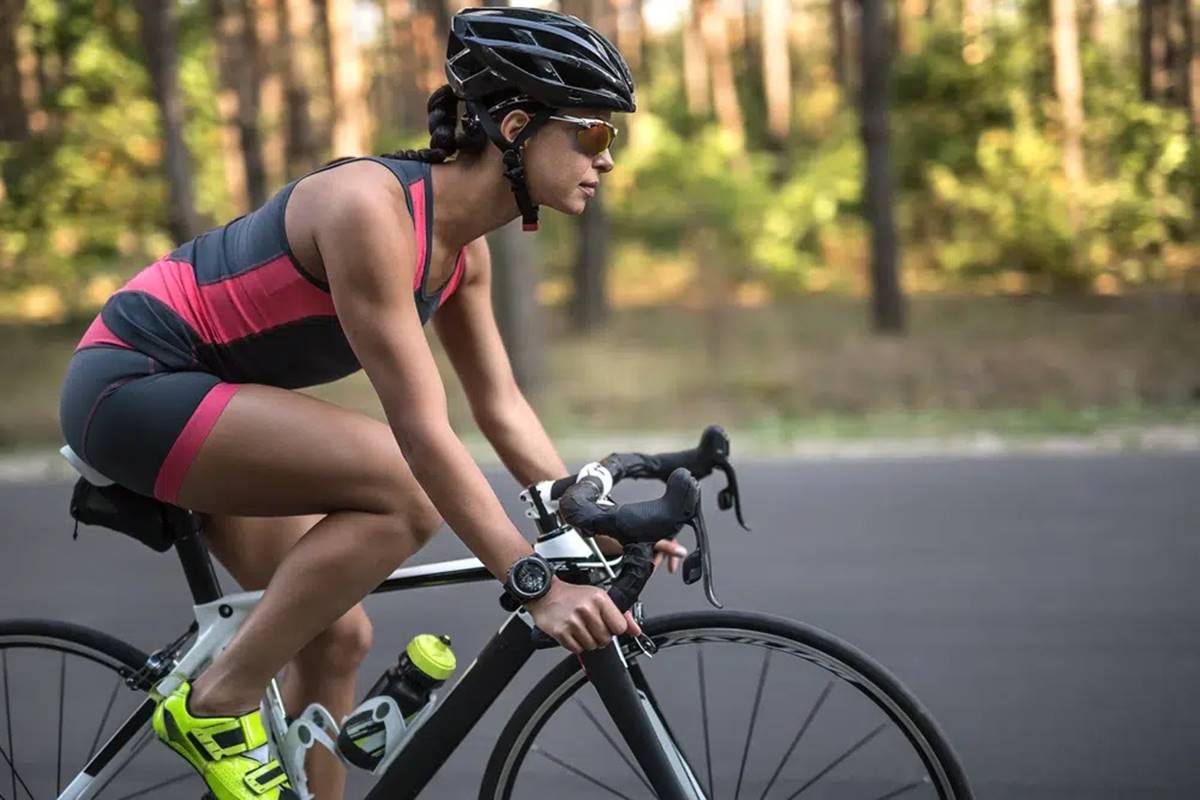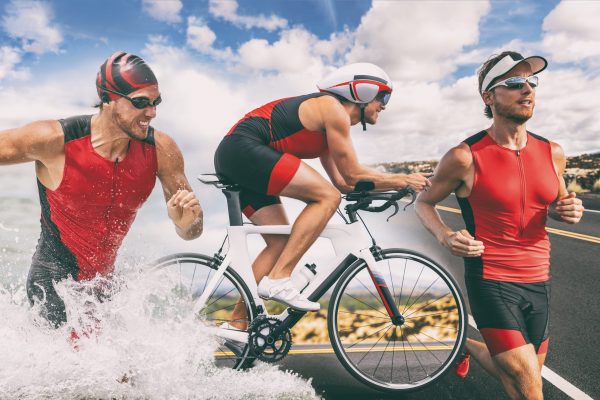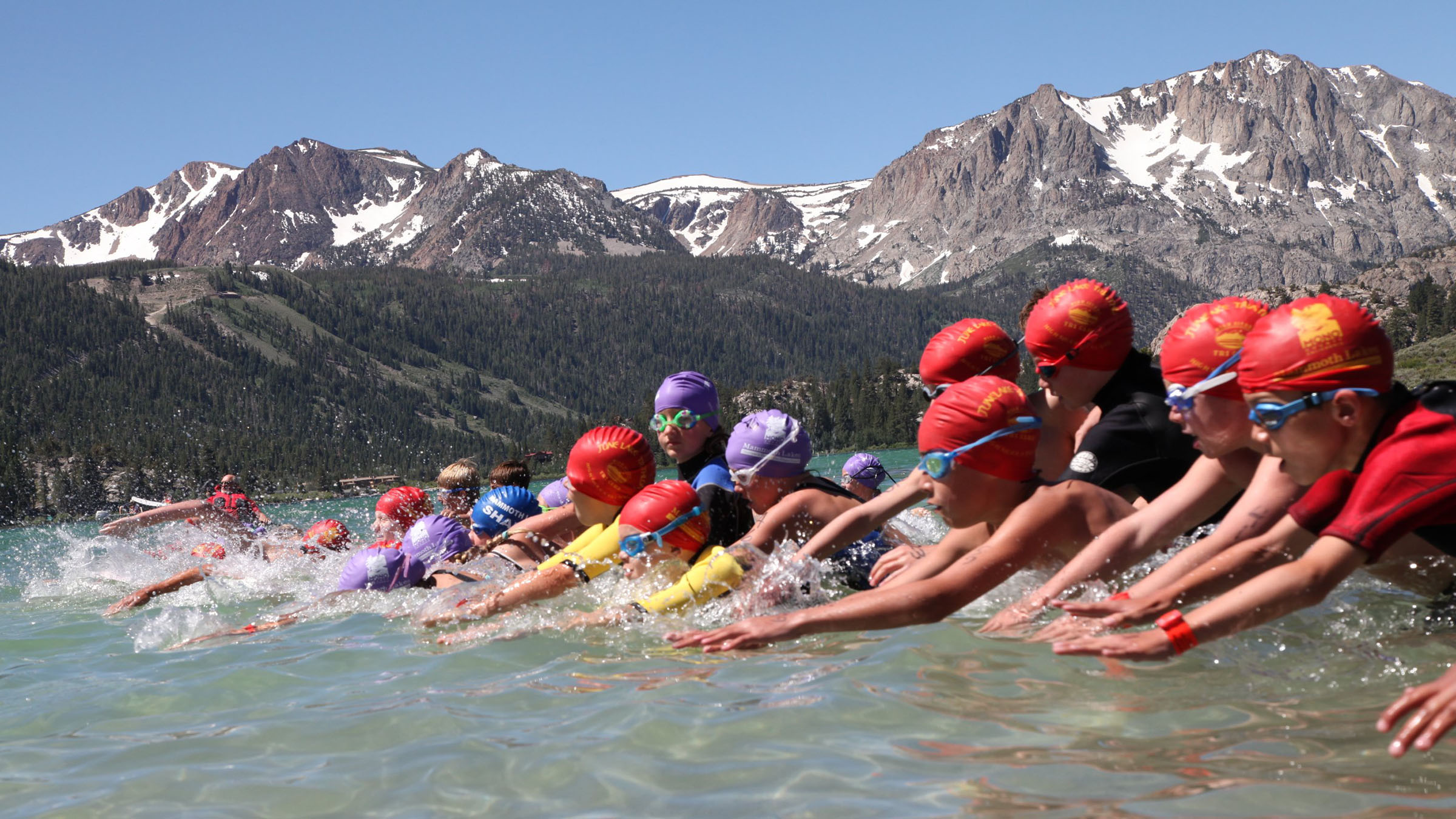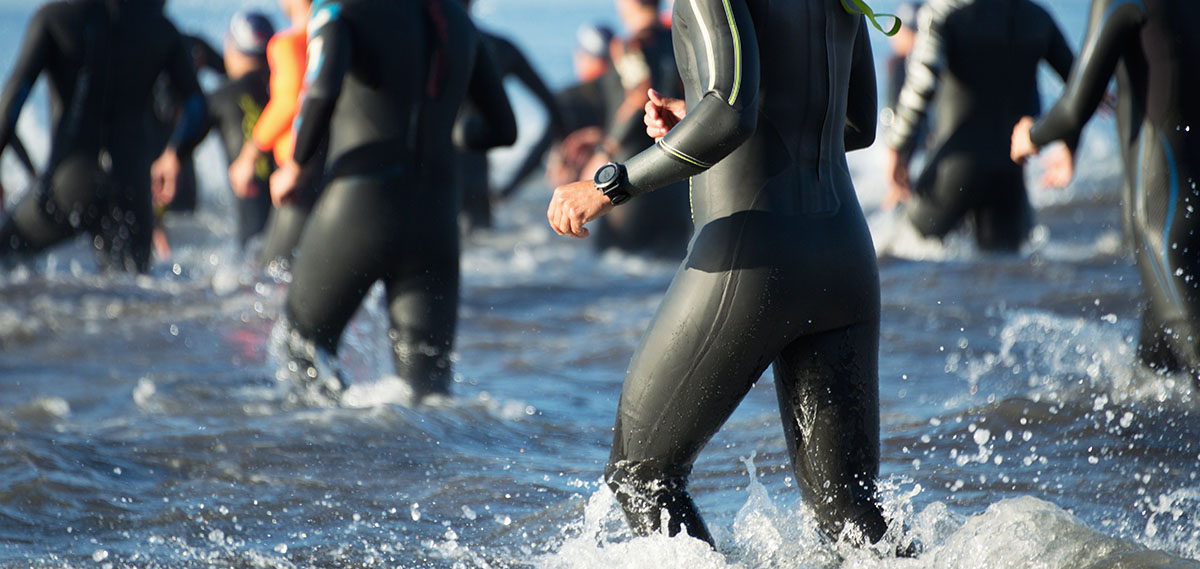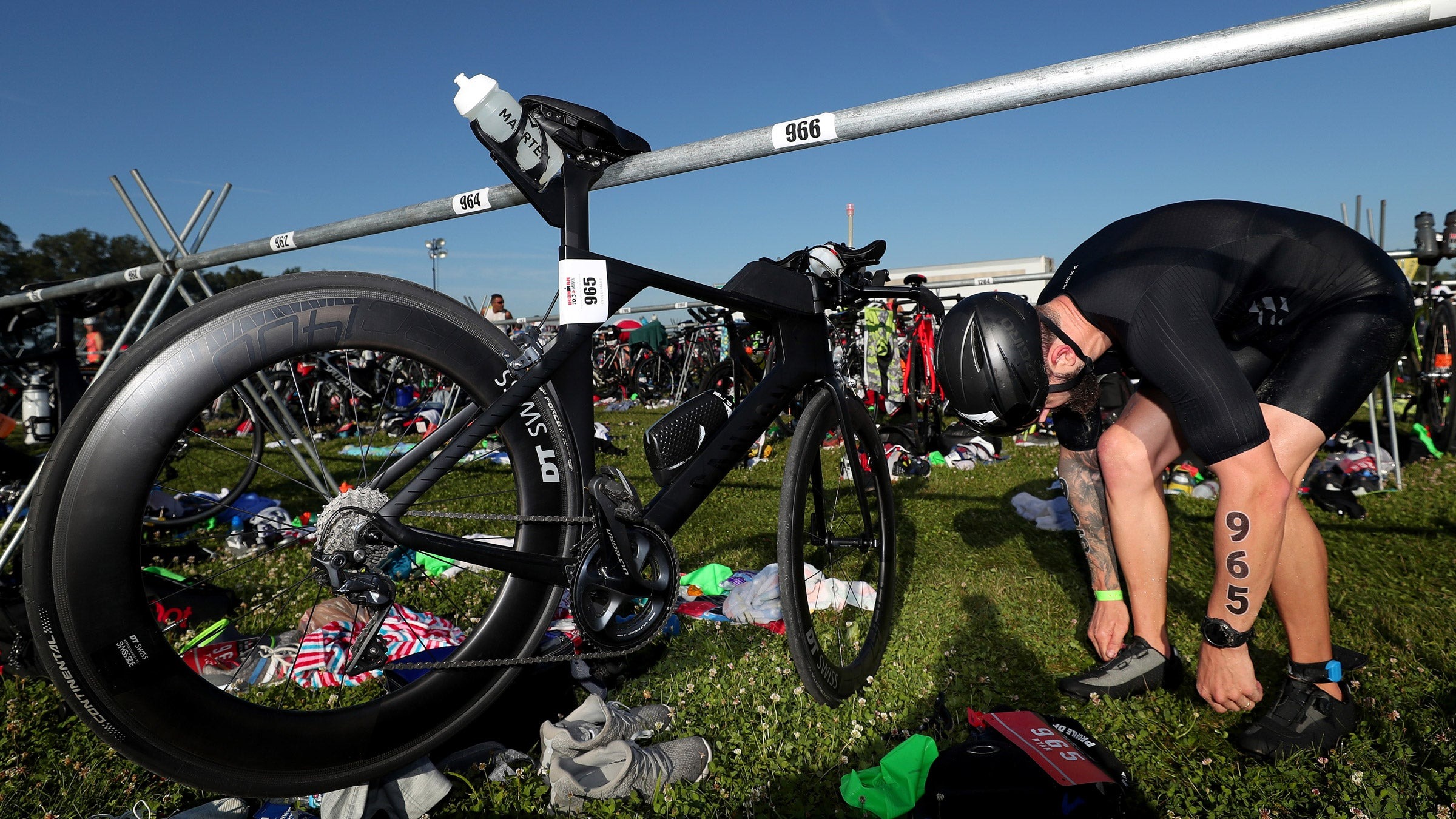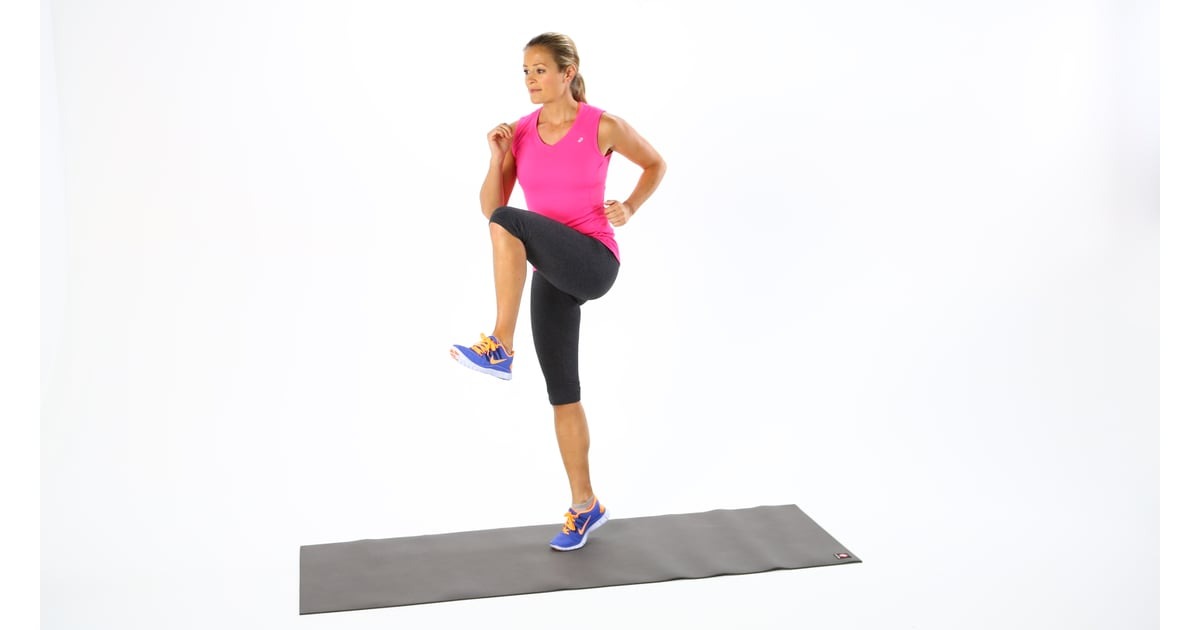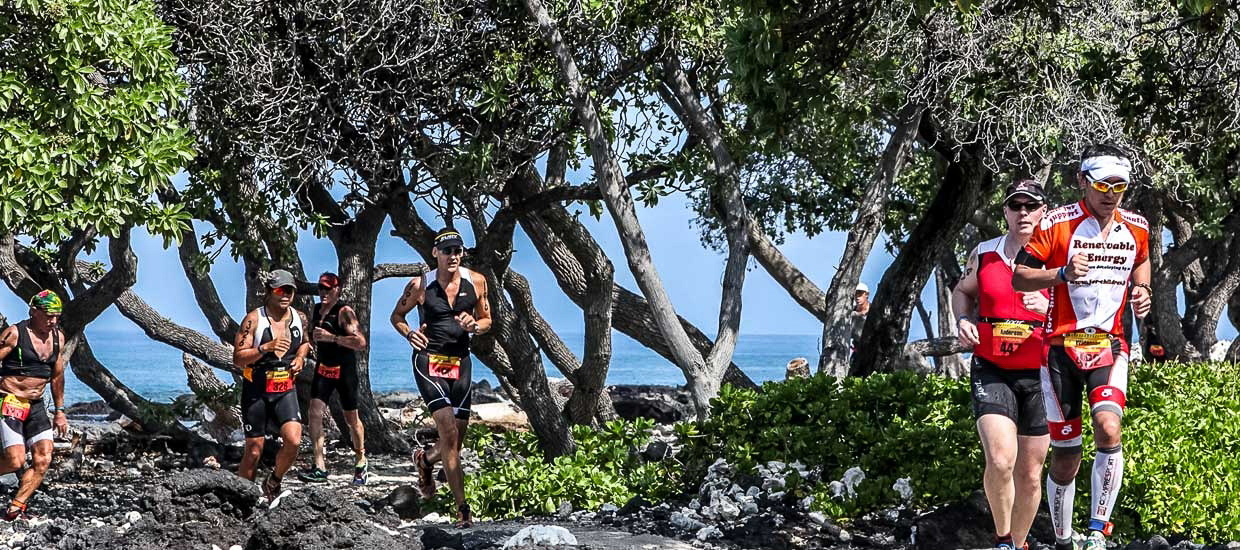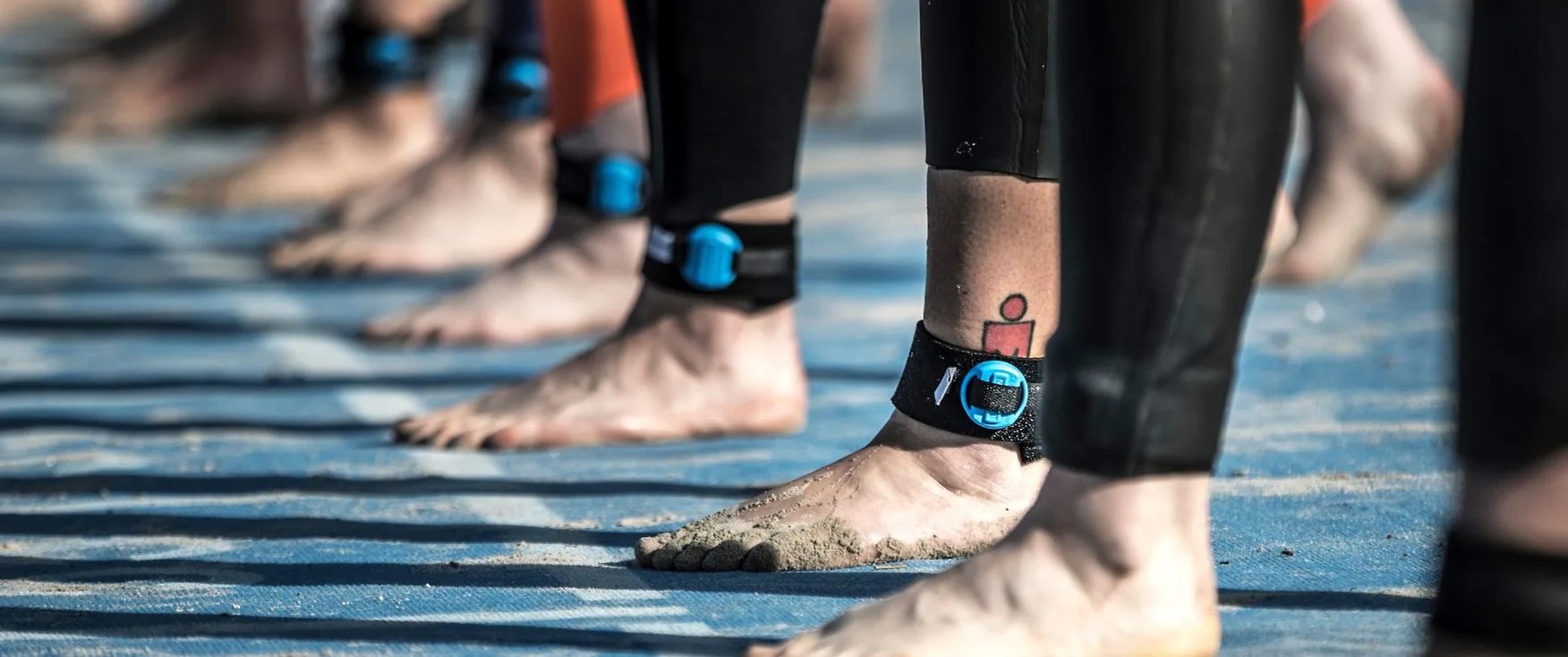

Featured
How Do I Wear Ankle Timer For Triathlon
Published: August 12, 2023
Discover the perfect way to wear ankle timers for your next triathlon. Read our featured guide for expert tips and insights. Start training today!
Introduction
Triathlons are challenging and exhilarating events that test participants’ endurance, strength, and mental fortitude. From swim to bike to run, athletes push themselves to the limits to reach the finish line. To accurately measure performance and track race times, many triathletes rely on ankle timers.
Ankle timers are small devices that securely strap to the ankle and precisely record the time taken to complete each segment of the triathlon. They offer several benefits for athletes, including accurate tracking, convenience, and improved performance analysis.
This article will delve into the importance of wearing ankle timers in triathlons and provide practical tips for choosing, securing, and wearing them during your race. Whether you’re a seasoned triathlete or a newbie looking to enhance your race experience, this information is essential for optimizing your performance. So, let’s dive in and explore the world of ankle timers in triathlons.
Benefits of Wearing Ankle Timers in Triathlons
Wearing an ankle timer during a triathlon offers numerous advantages for athletes. Let’s explore the key benefits:
- Accurate Time Measurement: Ankle timers provide precise and reliable time measurement for each segment of the triathlon. This allows athletes to track their performance and identify areas for improvement. By knowing their split times, triathletes can set realistic goals and pace themselves accordingly.
- Convenience: Ankle timers are lightweight, compact, and easy to wear. Unlike other timing devices, such as wristwatches or chest straps, ankle timers do not restrict movement or cause discomfort. They stay securely in place throughout the race, allowing athletes to focus on their performance without any distractions.
- Performance Analysis: Ankle timers enable athletes to analyze their race performance in detail. By reviewing split times for each leg of the triathlon, athletes can identify strengths, weaknesses, and areas for improvement. This data can help triathletes develop effective training plans and strategies for future races.
- Motivation and Goal Setting: Ankle timers provide real-time feedback, motivating athletes to push harder and achieve their goals. Seeing split times and progress during the race can give triathletes the extra boost they need to stay focused and perform at their best. Ankle timers also help in setting specific time targets for each segment, allowing athletes to gauge their progress and make necessary adjustments during the race.
- Competition Enhancement: Ankle timers enhance the competitive aspect of triathlons. With accurate and reliable timing, athletes can compare their performance with others in their age group or category. This healthy competition encourages participants to push themselves even further, striving for personal bests and podium finishes.
By wearing ankle timers, triathletes can benefit from precise time measurement, convenience, performance analysis, motivation, and competition enhancement. These advantages make ankle timers an indispensable tool for athletes looking to optimize their training and race experiences.
Choosing the Right Ankle Timer
When it comes to choosing the right ankle timer for your triathlon, there are a few key factors to consider:
- Accuracy: Look for ankle timers that have a reputation for accurate time measurement. Read reviews, ask fellow triathletes for recommendations, and choose a timer that is known for its reliability. Accuracy is crucial for obtaining precise split times and analyzing your performance effectively.
- Comfort and Fit: Opt for an ankle timer that is comfortable to wear and provides a secure fit. Look for adjustable straps or bands that can be customized to your ankle size. Ensure that the timer does not cause any discomfort or restrict your movement during the race.
- Water Resistance: Considering that triathlons involve a swim leg, it is essential to choose an ankle timer that is water-resistant. Look for timers that have a high level of water resistance to withstand the conditions of the swim and prevent damage or malfunction.
- Battery Life: Check the battery life of the ankle timer to ensure it will last throughout the duration of the race. Look for timers that offer a long-lasting battery or the option to easily replace the battery. It is also a good idea to test the battery life during training sessions to avoid any surprises on race day.
- User-Friendly Interface: Consider the usability and interface of the ankle timer. Look for models that have an intuitive design and easy-to-read screen display. This will allow you to quickly glance at your split times without slowing down or getting distracted during the race.
- Price: While cost is an important factor, try not to compromise on the quality and essential features of the ankle timer. Look for a balance between affordability and functionality to ensure you get a timer that meets your requirements within your budget.
Take the time to research and compare different ankle timers before making a final decision. Consider your personal preferences and the specific needs of your triathlon races. Choosing the right ankle timer will enhance your overall race experience and support your training goals effectively.
Proper Placement of Ankle Timer
Ensuring the proper placement of your ankle timer is crucial for accurate time measurement and a comfortable race experience. Follow these steps to achieve the correct placement:
- Right or Left Ankle: Decide whether you prefer to wear the ankle timer on your right or left ankle. Choose the ankle that feels more natural and comfortable for you. There is no right or wrong choice; it is a matter of personal preference.
- Strap Position: Place the ankle timer strap just above your ankle bone, ensuring a secure and comfortable fit. Make sure the strap is snug but not overly tight, as this could restrict blood flow or cause discomfort during the race.
- Secure Attachment: Fasten the strap securely to ensure that the ankle timer stays in place throughout the swim, bike, and run legs of the triathlon. Check for any loose ends or potential areas where the timer might come loose during movement. A secure attachment will prevent any interruptions or distractions during the race.
- Positioning: Position the display of the ankle timer in a way that allows you to easily view your split times during the race. Check that the screen is facing the right direction for quick and effortless glances. It should be positioned in a way that doesn’t interfere with your movements or affect your performance.
- Comfort: Take a moment to assess the comfort level of your ankle timer placement. Walk or jog around to see if there are any areas of discomfort or irritation. Adjust the strap if necessary to ensure that it doesn’t dig into your skin or cause any chafing during the race.
Practicing wearing the ankle timer during training sessions will help you find the optimal placement that works for you. Remember, the goal is to have a secure and comfortable fit that allows for smooth race execution without any distractions or discomfort.
Securing and Adjusting the Ankle Timer
Once you have placed your ankle timer in the desired position, it’s important to ensure it is properly secured and adjusted. Here are some steps to follow:
- Double-check the Strap: Before you start your triathlon, make sure the strap of your ankle timer is securely fastened. Give it a gentle tug to ensure it won’t come loose during the race.
- Avoid Over-Tightening: While it’s important to have a secure fit, avoid over-tightening the strap. This can lead to discomfort and restrict blood flow. Find the balance between a snug fit and comfort.
- Prevent Slippage: If you notice the ankle timer slipping or moving during your training sessions, consider using a non-slip strap or adhesive tape to keep it in place. This will prevent any distractions while you’re focused on your race.
- Adjust during Transitions: During transitions from one leg of the triathlon to another, take the opportunity to check and adjust your ankle timer if needed. Make sure the strap is still secure and positioned correctly before you continue racing.
- Practice Quick Adjustments: In your training, practice making quick adjustments to the ankle timer while on the move. This will help you become more efficient in securing and adjusting the timer, saving you time and energy during the race.
Securing and adjusting the ankle timer properly is essential to ensure it stays in place and provides accurate time measurement throughout the triathlon. Take the time to practice and find the best method that works for you, so you can focus on your performance without any distractions.
Tips for Wearing Ankle Timer during a Triathlon
Wearing an ankle timer during a triathlon can greatly enhance your race experience. Here are some tips to help you make the most of wearing an ankle timer:
- Practice in Training: Before your race day, practice wearing and using the ankle timer during your training sessions. This will help you become familiar with its functionality and ensure that it doesn’t interfere with your performance.
- Glance at Split Times: During the race, take quick glances at your ankle timer’s display to monitor your split times. This will help you gauge your pace and make any necessary adjustments to achieve your intended race strategy.
- Use the Data for Analysis: After the race, analyze the data provided by your ankle timer to identify areas for improvement. Look for patterns in your split times and evaluate how your performance varied in each leg of the triathlon. This information can guide your training and help you focus on specific areas that need attention.
- Set Realistic Goals: Use the data from your ankle timer to set realistic goals for future races. Consider your split times and determine areas where you can push yourself to improve. Set challenging yet achievable targets based on your previous performances.
- Take Note of Transition Times: In addition to tracking the split times for each leg, also pay attention to your transition times. This will give you insights into your efficiency in transitioning between disciplines and may help you identify opportunities to improve your overall race time.
- Stay Focused: While the ankle timer provides valuable data, remember to stay focused on your race and not solely rely on the numbers. Listen to your body, maintain proper form, and trust your training. The ankle timer is a useful tool, but it’s important to race smart and pace yourself effectively.
- Share and Compare: Engage with your fellow triathletes who also use ankle timers. Share your experiences, discuss split times, and learn from each other. This can foster a sense of camaraderie and provide valuable insights for further improvement.
- Maintain the Ankle Timer: After the race, clean and store your ankle timer properly. Remove any sweat or water residue, and ensure it is dry before storing it. Regularly check the battery and replace it when necessary to avoid any issues for future races.
By following these tips, you can make the most of wearing an ankle timer during your triathlon races. The data provided by the timer can help you track your progress, set goals, and improve your overall performance.
Precautions and Safety Measures
While wearing an ankle timer during a triathlon can be beneficial, it’s important to take certain precautions and follow safety measures to ensure a safe and successful race. Here are some guidelines to consider:
- Follow Race Regulations: Familiarize yourself with the rules and regulations of the triathlon event regarding the use of timing devices. Ensure that ankle timers are allowed and comply with the event guidelines.
- Secure the Timer Properly: Make sure the ankle timer is securely fastened before the race to prevent it from becoming loose during the swim, bike, or run legs. A loose or dangling timer can be distracting and may result in discomfort or injury.
- Avoid Obstructing Body Movements: Ensure that the ankle timer placement does not hinder your movements or get in the way of proper form. Make adjustments if you experience any discomfort or restrictions during training sessions.
- Practice Swimming with the Timer: If the triathlon involves a swim leg, practice swimming with the ankle timer before the race. Get accustomed to the feeling of having the timer on your ankle and ensure that it does not impede your swimming technique.
- Be Mindful of Others: During crowded swim starts or transition areas, be considerate of other participants. Avoid any contact or unintentional interference with fellow athletes when adjusting or securing your ankle timer.
- Stay Hydrated: Hydrate properly before and during the race to prevent dehydration and ensure optimal performance. Keep in mind that wearing a timer on your ankle may increase sweating in that area, so pay extra attention to maintaining hydration levels.
- Monitor Timer Placement: Periodically check your ankle timer during the race to ensure it hasn’t shifted or become loose. This will help prevent distractions and allow you to stay focused on your performance.
- Listen to Your Body: While the ankle timer provides valuable data, listen to your body’s cues as well. If you experience any discomfort, pain, or unusual sensations, prioritize your well-being and make any necessary adjustments, even if it means temporarily stopping or removing the ankle timer.
By taking these precautions and following safety measures, you can minimize the risks associated with wearing an ankle timer during a triathlon and ensure a safe and enjoyable race experience.
Conclusion
Wearing an ankle timer in a triathlon can significantly enhance your race experience and performance analysis. The benefits of using an ankle timer include accurate time measurement, convenience, performance analysis, motivation, and competition enhancement. By choosing the right ankle timer and correctly securing it, you can ensure accurate timing and a comfortable fit throughout the race.
During the triathlon, remember to take quick glances at your ankle timer’s display to monitor your split times and progress. Utilize the data provided by the timer to set realistic goals, analyze your performance, and make improvements for future races.
However, while wearing an ankle timer, it’s important to follow precautions and safety measures. Secure the timer properly, avoid obstructing body movements, and be mindful of other participants during crowded moments. Additionally, take care of your hydration levels and listen to your body for any signs of discomfort or distress.
By following these guidelines, you can make the most of wearing an ankle timer in a triathlon while ensuring your safety and enjoyment. Remember, the ankle timer is a tool to support your performance, but it is your training, determination, and commitment that will ultimately lead you to the finish line.
